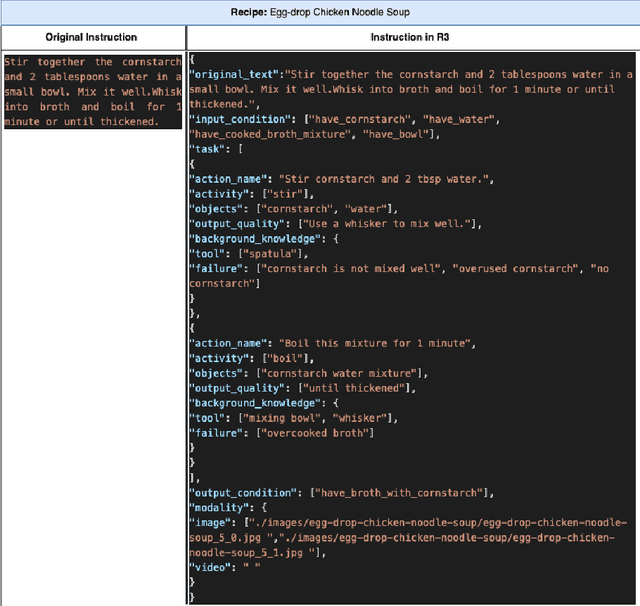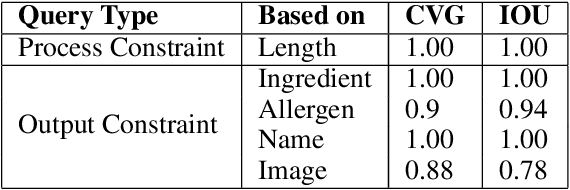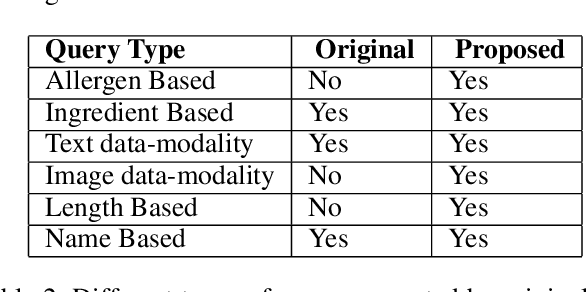A Rich Recipe Representation as Plan to Support Expressive Multi Modal Queries on Recipe Content and Preparation Process
Paper and Code
Mar 31, 2022



Food is not only a basic human necessity but also a key factor driving a society's health and economic well-being. As a result, the cooking domain is a popular use-case to demonstrate decision-support (AI) capabilities in service of benefits like precision health with tools ranging from information retrieval interfaces to task-oriented chatbots. An AI here should understand concepts in the food domain (e.g., recipes, ingredients), be tolerant to failures encountered while cooking (e.g., browning of butter), handle allergy-based substitutions, and work with multiple data modalities (e.g. text and images). However, the recipes today are handled as textual documents which makes it difficult for machines to read, reason and handle ambiguity. This demands a need for better representation of the recipes, overcoming the ambiguity and sparseness that exists in the current textual documents. In this paper, we discuss the construction of a machine-understandable rich recipe representation (R3), in the form of plans, from the recipes available in natural language. R3 is infused with additional knowledge such as information about allergens and images of ingredients, possible failures and tips for each atomic cooking step. To show the benefits of R3, we also present TREAT, a tool for recipe retrieval which uses R3 to perform multi-modal reasoning on the recipe's content (plan objects - ingredients and cooking tools), food preparation process (plan actions and time), and media type (image, text). R3 leads to improved retrieval efficiency and new capabilities that were hither-to not possible in textual representation.
 Add to Chrome
Add to Chrome Add to Firefox
Add to Firefox Add to Edge
Add to Edge